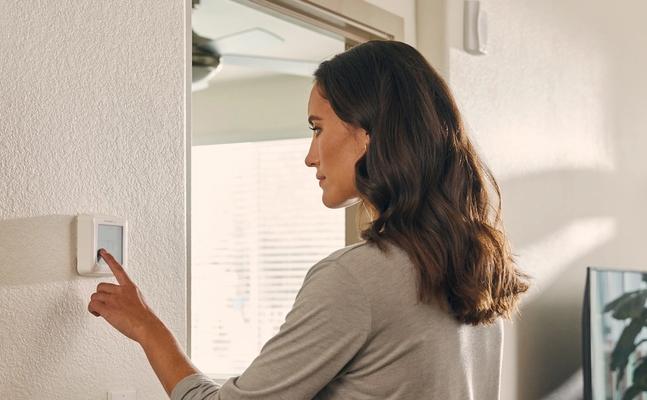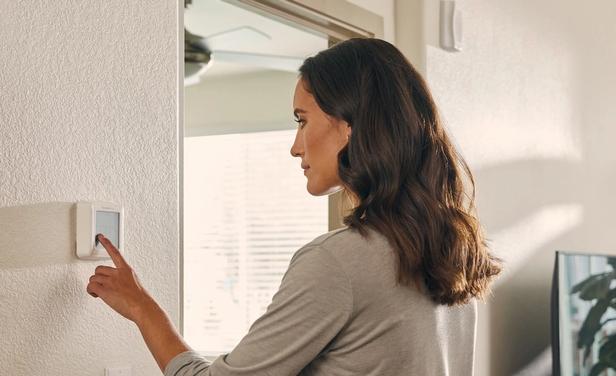Subscribe to our newsletter
The temperature’s rising in the rental market, and it’s not just the weather. A 2022 Rent.com survey found that smart thermostats topped the list of renters’ most-wanted smart devices. It was hot back then, and it’s still hot today. According to the 2024 NMHC and Grace Hill Renter Preferences Survey , nearly two-thirds of renters (72%) want a smart thermostat. These devices continue to be in high demand in today’s rental market.
It’s easy to see why these devices are in demand. Smart thermostats go a step beyond programmable thermostats. They allow residents to control the temperature remotely with a few taps on their smartphones. Some savvy models even learn users’ schedules, automatically adjusting temperatures and slashing energy costs. But it’s not just residents who benefit — multifamily owners and operators benefit by efficiently managing the temperature in vacant homes, common areas and amenity spaces.

Thinking about adding smart thermostats to your rental property portfolio? This guide explores:
Factors to consider when choosing a smart thermostat
Multifamily owners and operators have different needs than single-family homeowners when it comes to smart thermostats. Consider these factors when shopping for the best models for rental homes.
HVAC compatibility
Get to know your HVAC system before you pick a thermostat. Basic thermostats may only work with simple heating and cooling systems. More sophisticated models support heating, air conditioning, dehumidifying, ventilation and more. Look for a thermostat that supports your HVAC type —whether central heating and cooling, radiant heating or heat pumps—and voltage requirements. It’s worth noting that some thermostats require a common wire (C-wire) for continuous power to the thermostat, but don’t let that deter you. Even without C-wires, you can still upgrade to smart thermostats in your community. You might need to invest in adapters or professional installation, but the benefits often outweigh these initial costs.
Smart apartment software integration
Smart apartments are the future. If you haven’t already, you’ll likely install other smart devices in your rental homes. Ensure your smart thermostat works seamlessly within a smart home ecosystem. Popular platforms—like Amazon Alexa, Apple Homekit, Google Assistant (including Google Nest) and Samsung Smart Things—support a wide range of devices. Specialized solutions like SmartRent allow users to manage connected devices within a single app. That means residents can easily monitor thermostats, smart locks, smart sensors and more.
Easy installation
For DIY installation, look for thermostats designed for user-friendly installation with clear instructions. Consult an HVAC technician or electrician if you have questions or need help during installation. For a more seamless experience, you can work with a trusted service provider specializing in multifamily smart home technologies.
Functions
Not all smart thermostats have the same capabilities. Compare these functions during your selection process:
Interface
A user-friendly interface is critical in multifamily settings where residents have varying technical expertise. A simple, intuitive interface reduces maintenance calls and makes it easy for residents to save energy.
Connection type
Determine whether the thermostat connects via WiFi or Z-Wave, a wireless communication protocol for smart homes. WiFi thermostats tend to be easier to install and don’t require an additional hub. They may also offer broader compatibility with other devices. Z-Wave devices typically require a hub or controller for optimal functioning (but they consume less energy and interact on a less congested, more secure network). Z-Wave is also better at traveling through walls and obstructions to improve connection. Choose the option that best suits your smart home set-up.
Remote capabilities
Remote control allows a user to change temperature settings from afar. It’s an essential feature for most residents and property managers. While most thermostats support remote capabilities, verify each model's specific features.
Learning features
Thermostats with learning features adapt to your lifestyle, automatically adjusting settings based on your habits. Some use motion sensors to understand your daily routines, while others utilize geofencing capabilities. These geofencing-enabled devices tap into smartphone location data, adjusting temperatures based on whether you’re home or away. The result is a more comfortable living space with minimal manual input.
Energy reports
If energy efficiency is a key priority, look for a thermostat that provides detailed energy usage reports. These reports can help residents lower utility bills and help maintenance teams detect HVAC issues early.
The best smart thermostats for multifamily
Once you understand your HVAC system and the other considerations above, it’s time to compare thermostats. The following devices are ideal for multifamily settings. They’re also great picks for short-term and vacation rentals, like those on AirBnB and Vrbo.
Stelpro Ki Electronic Thermostat STZW402+
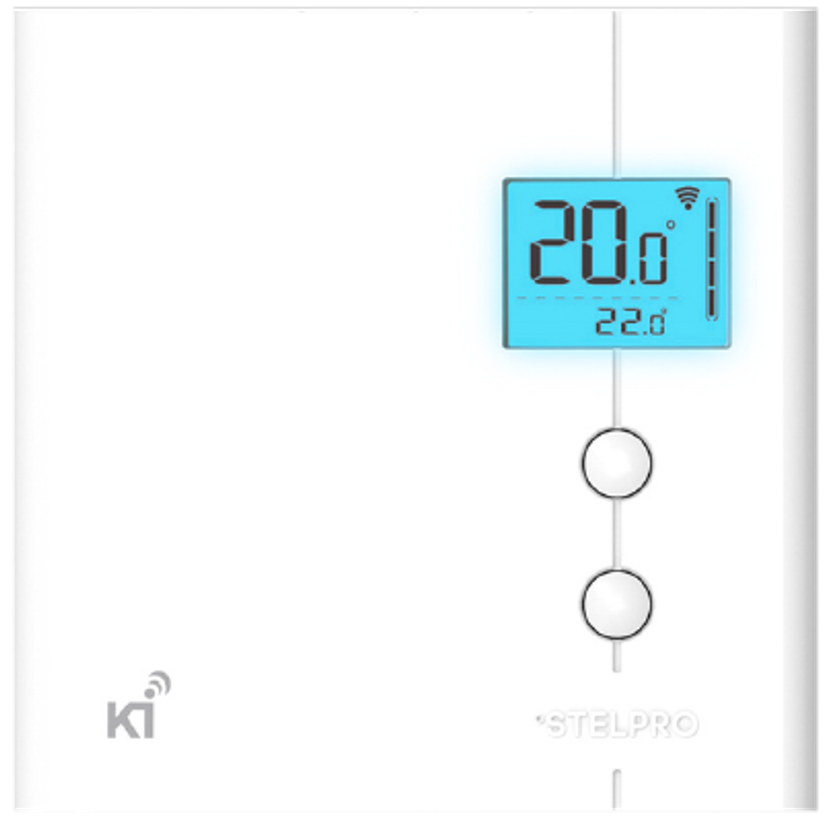
With a user-friendly interface and programmable settings, the STZW402+ empowers residents to remotely regulate the temperature in different parts of their homes. According to an independent study, the company claims this thermostat can save up to 20% in energy.
The STZW402+ uses Z-Wave, meaning it integrates with home systems and other smart devices that also use Z-Wave. Unlike many smart thermostats, it’s compatible with high-voltage heating systems, including electric baseboard heat or convectors.
Pros:
Uses Z-Wave protocol and integrates with Z-Wave networks
Works with high-voltage heating systems
Enables remote control
Provides precise temperature control
Turns the heater on in pulses for even heat and less energy usage
Features an easy installation process
Achieves Z-Wave Plus Certification
Cons:
Requires a Z-Wave hub or controller for optimal functionality
Can’t turn off the heat completely (The lowest temperature setting is 41 degrees.)
The best option for those looking for:
Precise temperature control
Honeywell Home T6 Pro Smart Thermostat
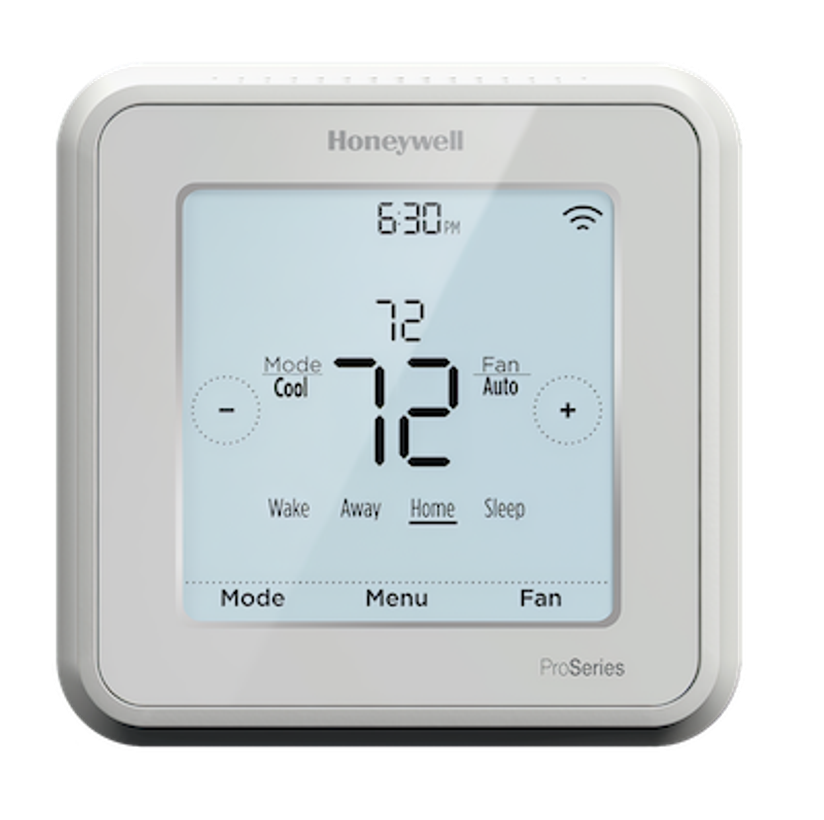
With advanced features, a user-friendly design and a durable build, this thermostat is a good option for multifamily. It connects via WiFi instead of Z-Wave, which may be better for some communities. The company offers different models of the T6 Pro for heat pumps and conventional systems, making it a versatile choice for communities with diverse HVAC setups.
Residents can save energy by customizing thermostat settings for different days of the week. Or they can switch on geofencing to enable the thermostat to adjust the temperature based on smartphone location.
Pros:
Optimizes energy efficiency with time-based settings and geofencing
Works with WiFi-enabled smart devices, platforms and voice assistants
Allows remote control via WiFi
Features an easy installation process (C-wire is required)
Cons:
Lacks support for the simultaneous use of geofencing and time-based scheduling
The best option for those looking for:
WiFi compatibility
Alloy SmartHome Electrical Heating Thermostat MH4
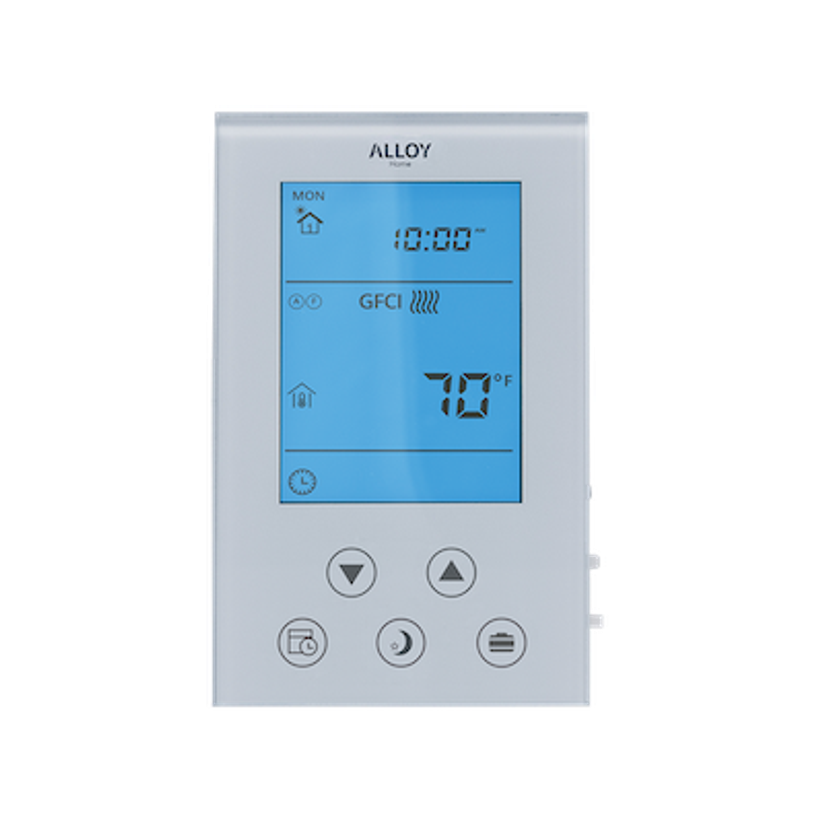
This thermostat is made for multifamily communities and is part of SmartRent’s in-house smart equipment line. When connected to SmartRent’s smart-home platform, users can control thermostats, lights, sensors, locks and more using one app. The MH4 has advanced scheduling features, including vacation and energy-saving modes. These capabilities make it an ideal landlord thermostat for optimizing energy usage in vacant homes and common areas.
The MH4 can be used with various electric HVAC systems. It monitors both floor and room temperatures for accurate heating control. It also features floor overheating protection and a Ground Fault Circuit Interrupter (GFCI), fostering peace of mind by preventing floor damage and electric shocks. It has a built-in Z-Wave module and can be operated in any Z-Wave network.
Pros:
Optimizes energy use with advanced scheduling options
Protects floors and enhances safety with overheating protection and a GFCI
Supports various heating systems
Features a user-friendly interface for easy setup and operation
Uses Z-Wave protocol and integrates with Z-Wave networks
Integrates seamlessly into SmartRent’s smart-home ecosystem
Achieves Z-Wave Plus Certification
Cons:
Requires a Z-Wave controller or hub for optimal functionality
Typically requires professional installation
May require regular maintenance to ensure proper functionality
The best option for those looking for:
Seamless integration with a trusted smart-home platform
Alarm.com Thermostat ADC-T2000

With a simple interface and solid performance, this smart thermostat is a dependable pick for multifamily. It offers customized scheduling and temperature presets to promote comfort, conserve energy and save money. Plus, it supports remote control via a mobile app. In addition, users can set up customized alerts. For instance, residents can get notified when someone changes the temperature settings.
The ADC-T2000 operates on the older standard Z-Wave network. The newer Z-Wave Plus network features an extended range, improved battery life, enhanced security and other benefits. But the ADC-T2000 remains a reliable and cost-effective option for many multifamily communities.
This thermostat integrates with Alarm.com or other smart-home platforms like SmartRent. It allows users to create smart scenes, or automated routines, with other devices. For instance, residents could set up a smart scene to raise the temperature in the morning while the lights brighten.
Pros:
Offers customized scheduling and temperature presets
Uses Z-Wave protocol and integrates with Z-Wave networks
Enables remote control
Features a simple, easy-to-use interface
Works with smart scenes for Z-Wave devices
Cons:
Requires a Z-Wave controller for optimal functionality
Uses the older standard Z-Wave protocol rather than the newer Z-Wave Plus
The best option for those looking for:
A simple interface
GoControl Thermostat GC-TBZ48
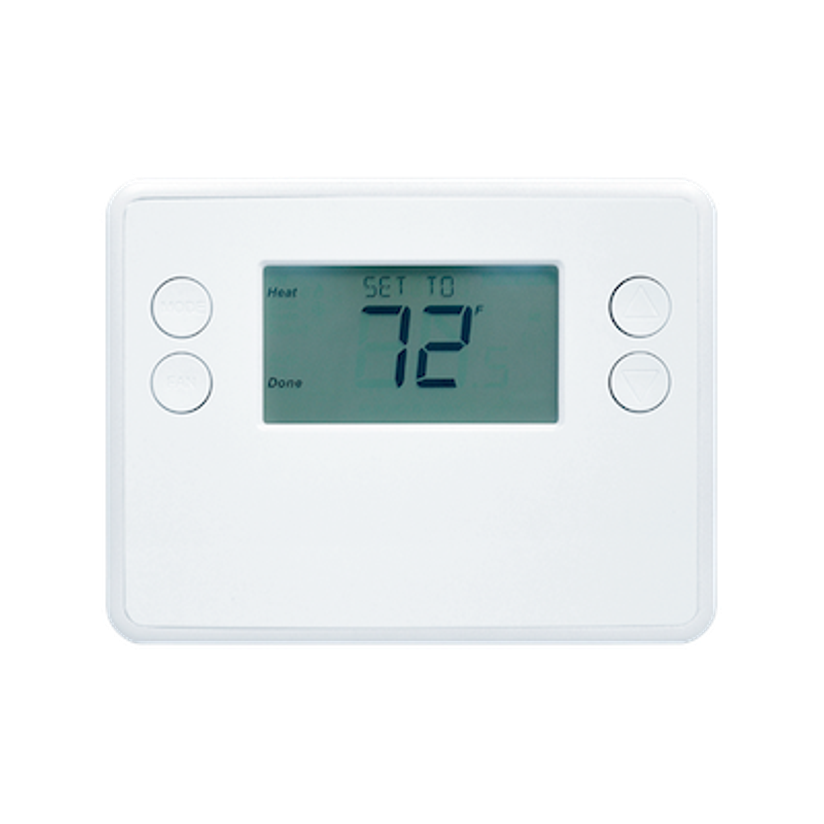
This battery-powered smart thermostat is a solid option for many multifamily communities. It may be the best choice if easy installation is your priority. It doesn’t require a C-wire for installation and can run on four AA batteries for up to two years.
It features a simple interface and works with most central HVAC systems, whether standard or heat pump. The GC-TBZ48 lacks advanced automation and scheduling features, but users can control it remotely using a smartphone. It operates on the Z-Wave protocol and can be incorporated into smart scenes for Z-Wave devices.
Pros:
Doesn’t require a C-wire for installation
Enables remote control
Uses Z-Wave protocol and integrates with Z-Wave networks
Works with smart scenes for Z-Wave devices
Achieves Z-Wave Plus Certification
Cons:
Requires a Z-Wave controller for optimal functionality
Lacks a scheduling feature
Lacks home/away or vacation programming features
The best option for those looking for:
Easy installation

Final thoughts
Smart thermostats are a popular, cost-effective, low-risk smart home technology upgrade for multifamily communities. In a 2024 survey of multifamily decision-makers, 95% said investing in smart thermostats was worth the upfront investment.
When evaluating smart thermostats for rental homes, check their compatibility with your HVAC system, integration with your current or future smart-home ecosystem, installation requirements and functionality. And consider exploring these five top options for multifamily communities:
Stelpro Ki Electronic Thermostat STZW402+
Honeywell Thermostat T6 Pro
Alloy SmartHome Electrical Heating Thermostat MH4
Alarm.com Thermostat ADC-T2000
GoControl Thermostat GC-TBZ48
No matter which smart thermostat you choose, you’ll invest in your residents’ comfort and convenience. At the same time, you’ll empower your team to remotely control the temperature in vacant homes and common areas to cut energy costs.
